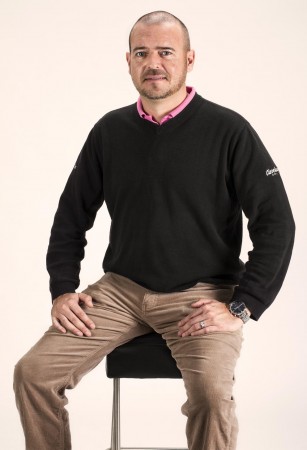When you hear the name Cleveland Golf, most people immediately think of wedges. How has Cleveland Golf been able to maintain the position of industry leader in the wedge category for so many years?
We have really focused on the short game and how to improve our products to help people score better from 125 yards and in. We know that 65% of shots are played within this distance, so it’s a very important part of the game. This focus has led us to defining new wedge technologies which help with spin, control and turf interaction. Every day we work to improve our knowledge and better our technologies in the short game category. Our latest product, the 588 RTX 2.0 wedge, has the ultimate in face technology and our most versatile collection of bounce / sole grind options to date. In conjunction with the new wedges, we are also launching a revolutionary bounce / sole grind fitting system called the Cleveland Golf Wedge Analyzer. This will help provide a simple, accurate way to fit people into the proper bounce and sole grind.
Can you tell us a bit more the Cleveland Golf Wedge Analyzer?
There is a lot of confusion in the marketplace about bounce and sole grinds. It’s difficult for fitters and consumers alike to decide which bounce or grind is right for each wedge in a golfer’s bag, especially indoors where the majority of wedges are sold at large retailers.
The Wedge Analyzer uses a Cleveland Fitting Wedge with a Swingybyte 2 motion analysis sensor to measure every aspect of the swing. This cutting edge technology uses metrics like attack angle and shaft lean at impact, in conjunction with typical turf conditions, to recommend the bounce and grind for each specific golfer. It also visually shows the swing to help the fitters explain why the golfer may need the bounce that it recommends.
What are some questions that golfers need to ask when shopping for new wedges?
Choosing the proper wedges for your game requires some up-front legwork on your part. Here are four key questions you need to ask when shopping.
Which lofts should I buy?
Try to match lofts so that your full-shot gaps are evenly spread. If you take a full swing for most shots over 50 yards, consider the four-wedge system with wedges lofted at 48, 52, 56 and 60 degrees. This mix allows you to consistently make a full motion, for various distances. If you can control distances by varying your setup and range of motion, try a two- or three-wedge mix, such as 48/56 or 48/54/60.
What bounce angles do I need?
Think about the course you play most often. Generally speaking, if you typically play on firm grass and sand, opt for wedges with less bounce and a narrow flange. Otherwise, it will skip along the ground. If turf and sand are soft, buy wedges with more bounce. Next, how steep is your angle of descent into the ball. If it’s steeper, try wedges with more bounce to help prevent hitting fat shots. A shallower angle of attack benefits from wedges with less bounce, allowing the club to glide through the grass.
What sole grinds do I need?
It refers to the shape and width of a wedge’s sole. If you’re constantly in the rough, you may benefit from a wider flange that can cut through the thicker grass. Likewise, you might consider a wider sole design on the higher lofts you’d use in the bunkers, so the wedge won’t dig. Tour pros frequently customize their grinds, either rounding or squaring the leading edge to make it fit their stroke.
Do I need a matching set?
No. However, a matching set will offer you consistent feel and performance. There are no set rules here, but know that many Tour pros actually mix up the wedges in their bag, because they know what kinds of shots they’re going to need to hit the most, from any given distance. So in that spirit, try to personalize your wedges to your own game.


